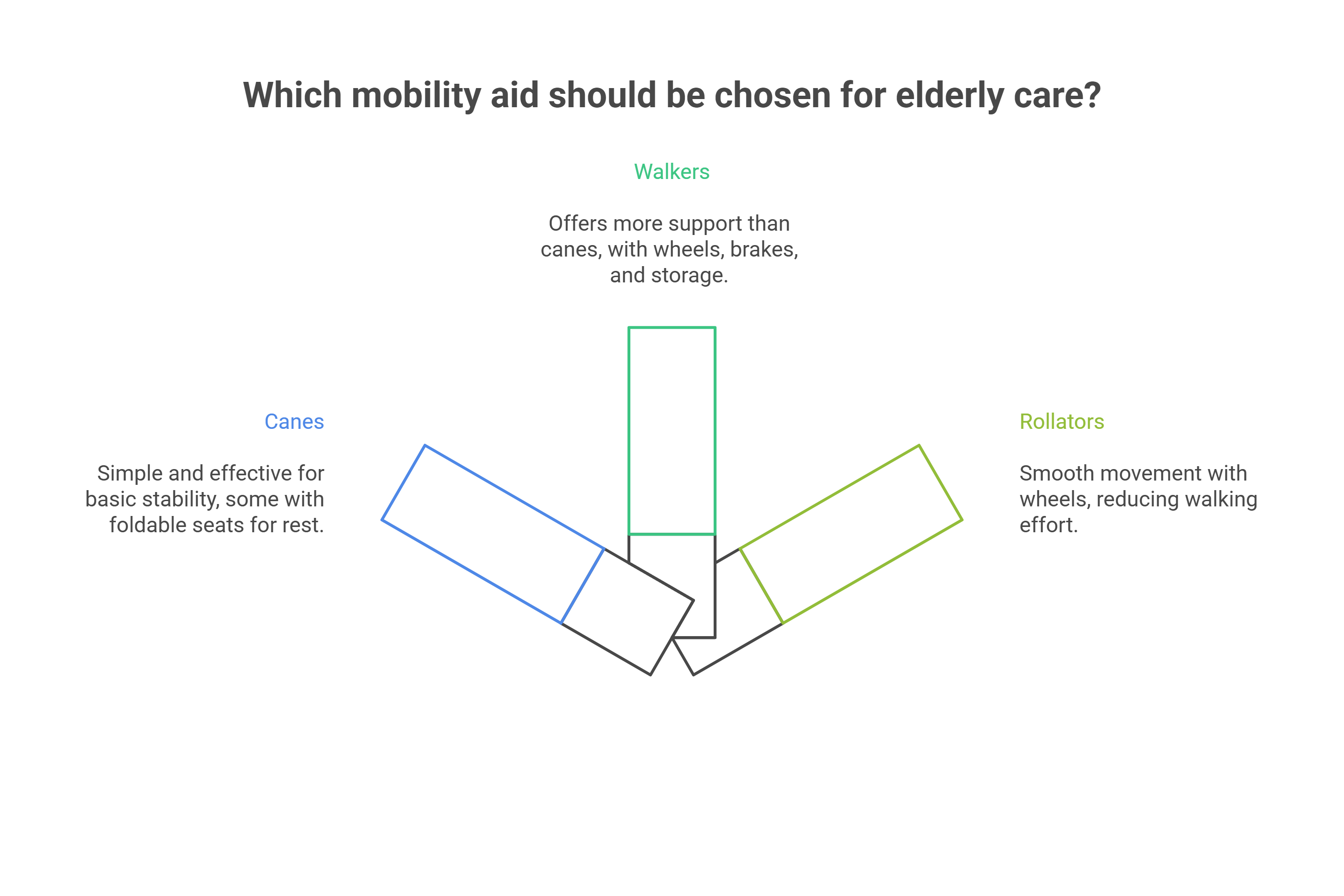Innovative Mobility Solutions for Elderly Care

Aging comes with its fair share of challenges, and mobility is one of the biggest hurdles. Whether it is getting out of bed, walking to the kitchen, or stepping outside for fresh air, movement becomes harder with time. For elderly individuals, the right mobility aids can mean the difference between staying active or feeling stuck.
As an HR professional or company administrator, you play a key role in providing the best support for elderly employees or residents in care facilities. So, what are the most effective solutions? Let us break it down.
Why Mobility Support Matters in Elderly Care
You may have noticed how a small change in mobility can impact an older person's confidence. A simple misstep can lead to a fall, causing injuries that take months to heal. Some even stop trying altogether, fearing another accident.
Providing the right mobility support is not just about comfort. It is about maintaining independence, preventing injuries, and improving quality of life. The good news? There are plenty of adaptive devices and assistive technologies that can make a big difference.
Types of Mobility Aids for the Elderly
Not all mobility aids are created equal. The right one depends on the individual’s needs, physical abilities, and daily routine. Let us take a look at some common options.
1. Walking Aids: Keeping the Pace
If an elderly individual needs a little extra balance while walking, these aids are a great choice:
- Canes – A simple but effective tool for those who need a bit of stability. Some canes even have foldable seats, so users can rest anytime.
- Walkers – Perfect for those who need more support than a cane offers. Many come with wheels, brakes, and even storage pouches.
- Rollators – A fancy word for a walker with wheels. They allow smooth movement and reduce the effort needed to walk.

2. Wheelchairs: Freedom on Wheels
For those who find walking too difficult or tiring, wheelchairs are a great solution. Options include:
- Manual wheelchairs – Require arm strength or assistance from a caregiver.
- Electric wheelchairs – A great option for those who want independence but lack the strength to push manually.
3. Mobility Scooters: A Ride for Independence
Think of these as the motorcycles of the elderly world. These battery-powered scooters are perfect for getting around indoors and outdoors with ease. They come in different sizes and designs, depending on the user’s needs.
Assistive Technology: Smart Solutions for Better Mobility
Technology is not just for the younger generation. The elderly can also benefit from assistive technology designed to make movement easier and safer.
1. Smart Walkers and Canes
Imagine (oops, scratch that!) a cane that alerts users if they are putting too much pressure on one side. Some even come with GPS tracking in case of an emergency.
2. Fall Detection and Prevention Systems
Smart sensors can detect unusual movements and send alerts if someone has fallen. These systems give peace of mind to both the elderly and their caregivers.
3. Stairlifts and Home Modifications
For those struggling with stairs, a stairlift can be life-changing. There are also grab bars, raised toilet seats, and non-slip flooring to reduce the risk of accidents at home.
Choosing the Right Mobility Aid
So, how do you decide which mobility aid is the best fit? Consider these factors:
- Level of Support Needed – Is it just a balance issue, or does the person need full-body support?
- Lifestyle and Environment – Will they be using it indoors, outdoors, or both?
- Physical Strength and Coordination – Some devices require more effort to operate than others.
- Budget – Some mobility aids are covered by insurance, while others require out-of-pocket expenses.
Encouraging Elderly Individuals to Use Mobility Aids
It is not always easy to convince someone to start using a mobility aid. Many elderly individuals feel that using a cane or wheelchair makes them "look old" or dependent. Here are some ways to help:
- Frame it as a tool, not a limitation – Instead of saying, "You need a walker," try, "This will help you stay active and safe."
- Show real-life benefits – If they love gardening but struggle to stand for long, a rollator with a seat could be a game-changer.
- Let them choose – Giving them the freedom to pick a style or color can make the transition easier.
.png)
Mobility Solutions for Workplaces and Care Facilities
For businesses and care facilities, it is essential to provide the right mobility support for elderly employees or residents. Some helpful changes include:
- Ramps and Elevators – Make buildings accessible for wheelchair users.
- Ergonomic Office Chairs – Reduce strain and provide better posture support.
- Accessible Restrooms – Grab bars, non-slip floors, and lower sinks can make a big difference.
Final Thoughts
Mobility challenges are a reality for many elderly individuals, but the right support can make a world of difference. From walking aids to assistive technology, there are plenty of options to help older adults stay active and independent.
As an HR professional or company administrator, you have the power to create an environment where elderly individuals feel supported, safe, and valued. Sometimes, a small change—like offering a rollator or installing grab bars—can bring back the joy of movement.
Because at the end of the day, everyone deserves the freedom to move with confidence.